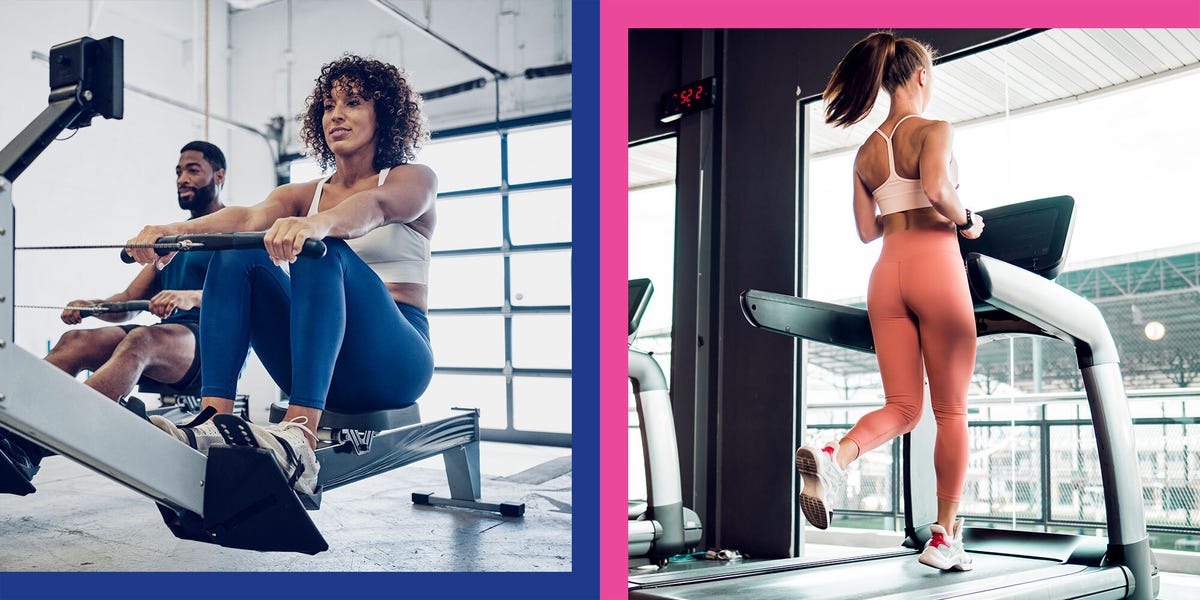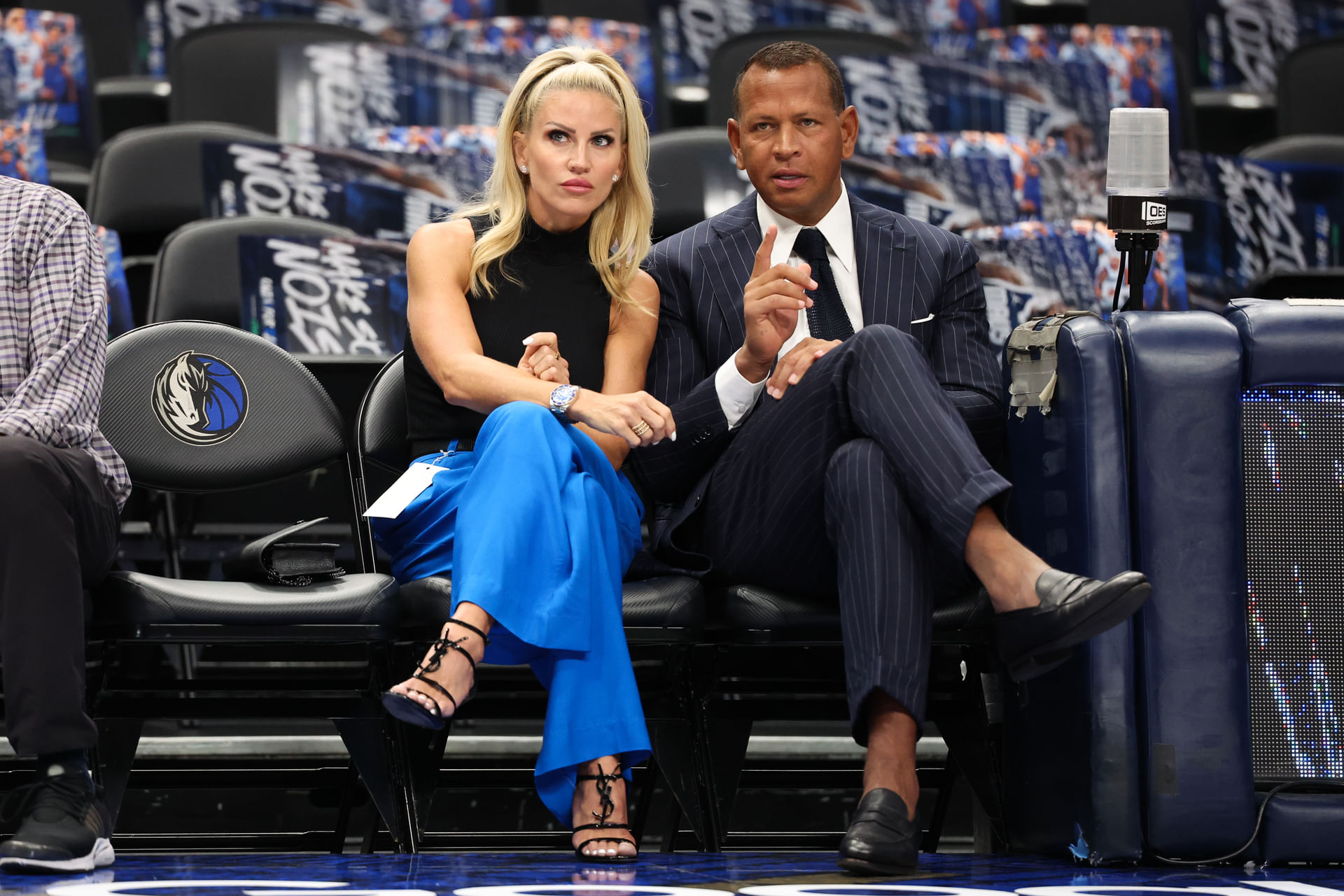You walk into the gym at 5:30 p.m. on a Tuesday, hyped up for you ready for your weekly run, when the inevitable happens: all the treadmills are accounted for. You’ve been neglecting your cardio, and know you know you need to get something in. What machine should you pick instead?
Enter: the rower. You might only associate rowing with people sweating bullets in CrossFit workouts or your militant high school crew team, but the machine is less intimidating than you’d think. It’s a great low-impact, full-body workout that anyone can do. Should you wait it out for a treadmill, or test out the rower for the first time?
“Both are excellent tools in the cardiovascular health toolbox,” says Sohee Carpenter, PhD, CSCS*D, a fitness coach and member of the WH advisory board. We asked the experts to compare and contrast the two modalities.
Meet the Experts: Sohee Carpenter, PhD, CSCS*D, is a fitness coach and member of the WH advisory board. Erica Coviello, CPT, is a level 2 certified RRCA running coach and owner of Run Fit Stoked. Michelle Reno-Parolini, CPT, is a master trainer at Concept2, and Director of Training and Product Strategy at RowHouse.
How These Machines Work
Each machine will work your cardiovascular system, but in slightly different ways.
Your Body On The Treadmill
A treadmill can replicate any kind of walking, jogging, or running you would do outside or on a track, says Erica Coviello, CPT, a level 2 certified RRCA running coach. Your quads, hamstrings, glutes, core, and calves work together to power your propulsion forward, whether you are walking or running.
It’s great for building power, strength, speed, and endurance, she says. If you’re running or jogging, it might cause a bit more impact through the joints of your lower body—important for increasing your bone density, but might not be ideal if you have joint issues. Talk to your doctor before starting a running program if you’ve had lower body injuries in the past.
Your Body On The Rower
The main differentiator between the rower and the treadmill is the muscles each recruit. Your whole body is involved on the rower. Sure, you might get subtle upper body action on the treadmill as you swing your arms—but you’re truly using the muscles of your upper back and biceps to power the rowing movement, says Michelle Reno-Parolini, CPT, master trainer at Concept2. That’s in addition to the muscles of your legs, namely the quads and glutes, that you’ll use to push through the foot plates.
“This means higher energy demand (calorie burn) and increased oxygen use (aerobic capacity), even at moderate intensity,” she says. Plus, it’s low impact on your joints, so you can train without the joint strain.
However, the rower is a bit more technical than other forms of cardio, Reno-Parolini says. “Without proper form, it’s easy to get discouraged or miss out on the benefits.” Because of this, it might be worth it to work with the coach for a few sessions to ensure you have the form down before adding the rower into your regular routine.
Treadmill vs. Rower: Which machine is better for your fitness goal?
There’s positives to both the treadmill and the rower, but deciding which is best for you will largely depend on what your goals are in the gym.
For Weight Loss
Fat loss is, at its simplest, about calories in versus calories out—if you’re consuming less than you’re burning, your body will use extra fat as fuel. The rower requires more output from your body because you’re using more muscles of your upper body to power the machine, Reno-Parolini says. So, theoretically, you’ll burn more calories in a shorter amount of time on the rower than the treadmill, assuming equal intensity levels.
However, the best cardio machine for weight loss is really the one you’re going to use most often, Coviello says. You might burn more calories on the rower, but if you absolutely hate using it and thus skip out on cardio day whenever it comes around, you’re better off using the treadmill.
For Strength
Of course, the quickest way to build strength is to strength train. But, that doesn’t mean that your cardio routine can’t help you get stronger.
You’ll gain some strength through your glutes and quads when you use a hefty incline on the treadmill, Coviello says. But, you’re going to gain a bit more strength through the whole body on the rower, because the machine places more resistance on you (either through wind or water resistance, based on the type of machine you’re using).
For Cardiovascular Health
Both machines will help improve your cardiovascular health, Carpenter says—what really matters is how, and how often, you use it.
You can utilize a lower intensity, think 70 to 80 percent of your maximum heart rate, to go for what is known as zone 2 cardio. This type of cardio can increase the amount of mitochondria in your muscle cells (the part of your cell that provides the fuel your muscles need to contract)—improving your performance and energy. More intense cardio (think 80 percent of your maximum heart rate or more), strengthens your heart’s muscles, improving its ability to pump blood throughout the body.
Factor in at least 150 minutes of low intensity cardio, or 75 minutes of high intensity cardio per week to reap all these benefits, according to the American Heart Association.
How to Get Started
If you’ve never used these machines before, or are just looking for a new way to challenge yourself on your favorite machine, our trainers provided some useful first time workouts that you can factor into your cardio days, below.
On The Rower
You can get both your high intensity and steady state cardio in on the rower. If you’re looking for a quick and dirty sweat, try incorporating intervals into your workout, Reno-Parolini says. Try rowing at full effort for 30 seconds on, and then resting for 30 seconds for 5 rounds. Interval training is great for “building power and improving your anaerobic threshold,” she says. Make it more challenging by increasing the amount of rounds or length of time you spend sprinting.
If you’d rather take the zone 2 approach, try to maintain a slow to medium pace for five to 10 minutes. You can increase that amount as your body adapts and you feel like you can handle more.
On The Treadmill
You can also use the treadmill for short bursts of high intensity, Carpenter says. Use distance or time to set your interval. Try running fast for 30 seconds, walking for 30 seconds for five rounds. As that gets easier, you can add more rounds or try to run faster.
You can also use the treadmill for some of that steady state cardio. Find a nice medium pace you can maintain for five to 10 minutes, and increase time as you adapt. “This is when you can pop in some music or a podcast and zone out,” she says.
How To Make The Most Of Both Machines
Learn all its functions. Make your equipment work for you by familiarizing yourself with its abilities. For example, many treadmills nowadays can program incline or speed increases so you’re not hitting the “up” arrow a bunch of times when doing intervals, Coviello says. Some also have pre-programmed hill and interval workouts that can be extremely useful. Ask a trainer at your gym to give you a little crash course to learn more about the specific machine you’re using.
Get a coach. A little guidance never hurt anyone—especially when it comes to the rower. Row technique is difficult to master, so it might be worth grabbing a trainer to help you get a feel for the movement. “A good coach can help you learn faster, stay injury-free, and unlock the full value of the machine,” Reno-Parolini says.
Start slow. “You want to, of course, not start off doing too much too soon,” Carpenter says. You run the risk of causing overuse injuries if you do. “It’s better to start off with shorter, less intense sessions and let your body adapt over time as you make the sessions harder.”
Mix it up. Best part about cardio? You don’t have to just pick one outlet. “If you’re trying to optimize your health and stay well-rounded with your fitness, it’s not a bad idea to engage in multiple forms of cardio to cross-train,” Carpenter says. “So even if you may primarily use the treadmill, maybe add in a [row] session every now and then – and vice versa!”
Cori Ritchey, C.S.C.S., is an Associate Health & Fitness Editor at Men’s Health, a certified strength and condition coach, and group fitness instructor. She reports on topics regarding health, nutrition, mental health, fitness, sex, and relationships. You can find more of her work in HealthCentral, Livestrong, Self, and others.




